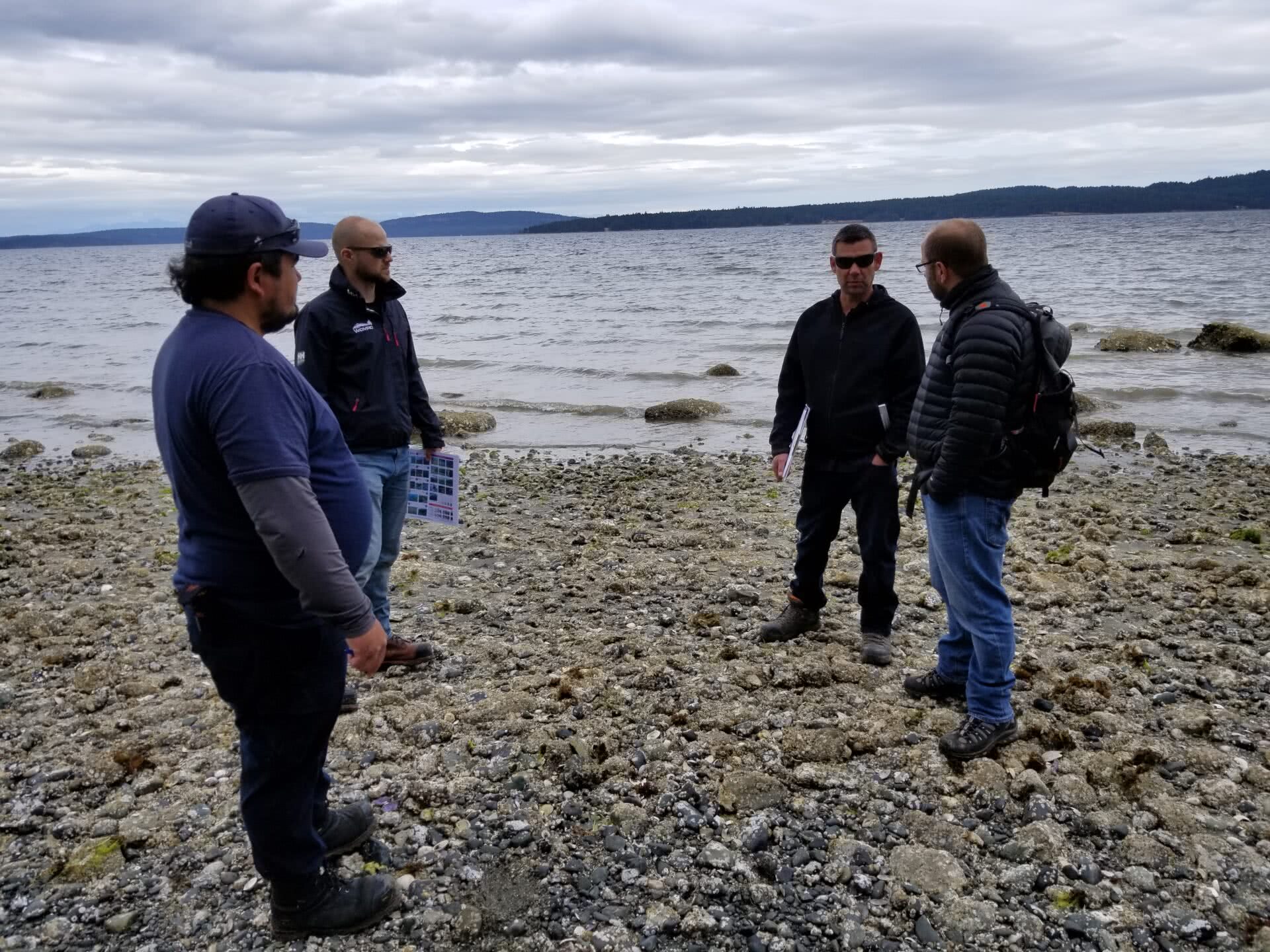Earlier this week, WCMRC crews and representatives from five First Nations completed a three-day Shoreline Cleanup Assessment Technique (SCAT) course held at Stz’uminus First Nation. Taking part in the spill response training were representatives from Musqueam, Halalt, Penelakut, Tsleil Waututh, and ‘Namgis nations.
SCAT is a systematic and comprehensive approach to surveying, collecting and documenting real-time data on shore oiling conditions during a spill response. SCAT is an integral component of a spill response and is fully integrated into the Incident Command System. The SCAT process includes eight basic steps:
- Conduct reconnaissance survey(s)
- Segment the shoreline
- Assign teams and conduct SCAT surveys
- Develop cleanup guidelines and endpoints
- Submit survey reports and shoreline oiling sketches to the ICS Planning Section
- Monitor effectiveness of cleanup
- Conduct post-cleanup inspections
- Conduct final evaluation of cleanup activities
One of the benefits of training together with First Nations and other partners is we can capitalize on each other’s knowledge and skills. We can also build positive relationships with one another, so that if a spill does occur, we already have experience working with one another. It is not only valuable knowledge gained in this training, it is also a great opportunity to learn from one another.
WCMRC’s mandate is to ensure there is a state of preparedness in place when a marine spill occurs and to mitigate the impacts on BC’s coast. Accordingly, WCMRC staff constantly train and exercise on different response tactics and strategies, including SCAT.
The training was sponsored by WCMRC and led by Spill Consult. Spill Consult is an independent technical consultancy and training organisation, with global experience in emergency and oil spill response.

